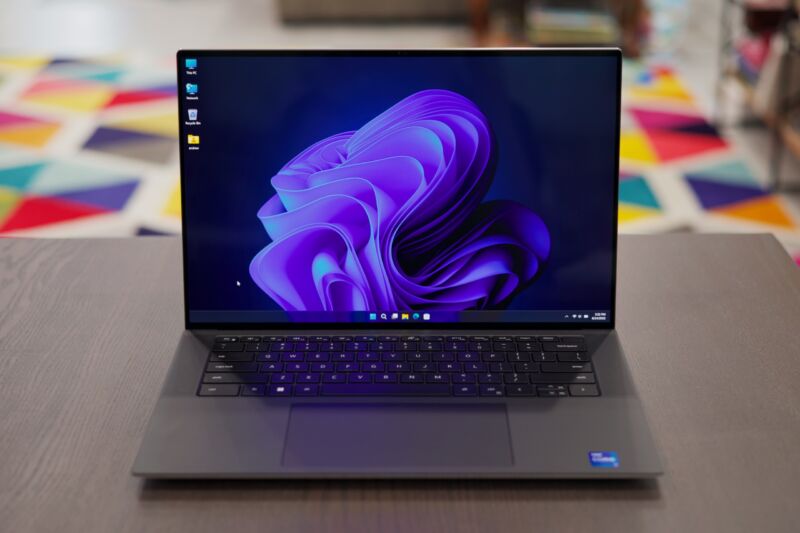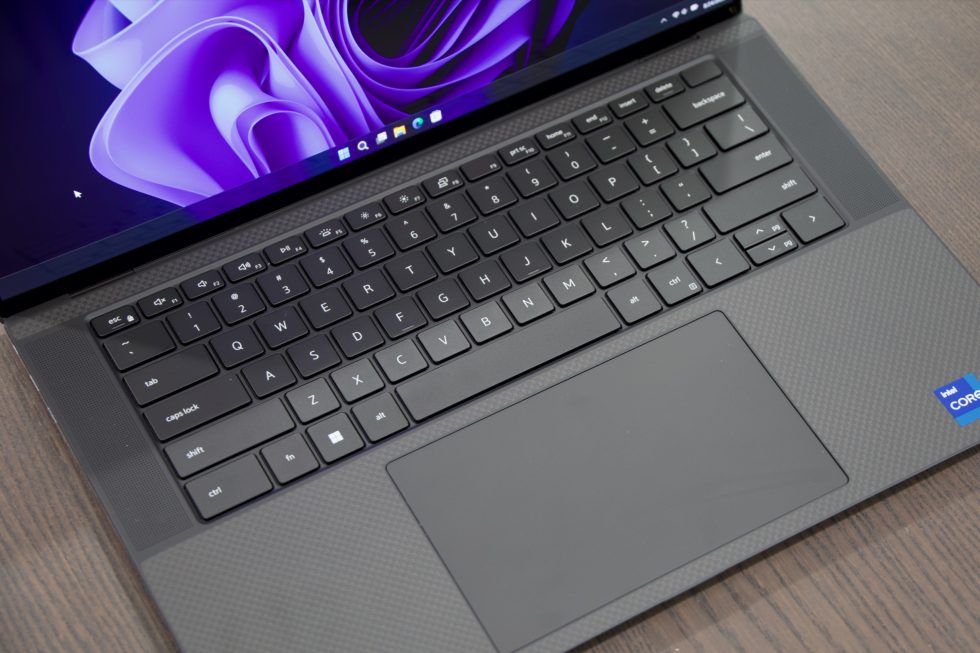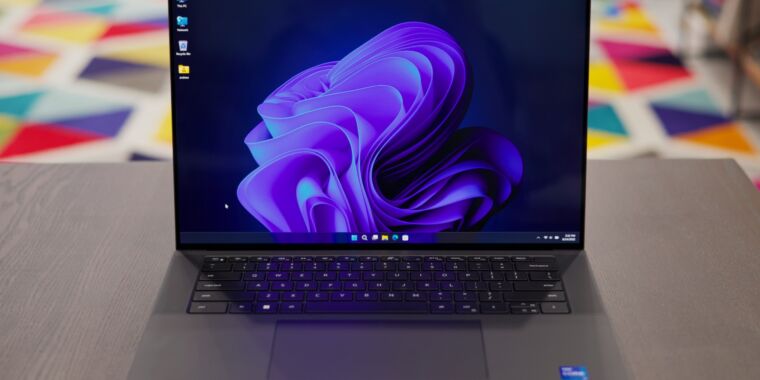
Andrew Cunningham
Even as an iterative update to an existing computer, Dell’s XPS 15 9520 is pretty mild. It’s super-iterative. The only thing that separates it from the XPS 15 9510 we reviewed last year is that it swaps the 11th-generation Intel processors for 12th-gen versions. Everything else, from the design to the screen to the GPU, is the same (unless you count changing the foreshortened Windows 10-era rectangle logo on the Windows key to a square Windows 11-era logo).
So we won’t spend much time redescribing things about this laptop that we have already mentioned. Weighing just a bit over four pounds, this is still a computer made for people who want more power than a 13- or 14-inch laptop can provide, but who still care enough about size and weight that they don’t want to graduate to a full-size desktop or a bulky gaming laptop.
It still has a nice slim-bezel screen, a huge trackpad, a comfortable keyboard with firm-but-not-too-firm keys and a pleasing amount of travel, and Thunderbolt and USB-C ports for accessories and charging (plus a single SD card reader and a headphone jack). A fingerprint reader, face-scanning Windows Hello-compatible IR camera, and a 720p webcam and speakers (serviceable-but-middling in both cases) round out the basic amenities.
-
The left side of the laptop offers a security lock slot plus a pair of Thunderbolt ports.
Andrew Cunningham -
On the right, a headphone jack, SD card reader, and USB-C port.
Andrew Cunningham
It is worth reiterating some of the finer technical points for people who don’t want to fish them out of a year-old review. The two ports on the laptop’s left are Thunderbolt 4, while the port on the right is plain-old USB-C. It retains a pair of RAM slots for removable DDR5 memory modules (an upgrade from last year’s DDR4), plus an extra M.2 2280 slot for a second NVMe SSD. The system’s 130 W power brick uses a USB-C connector, but it’s still technically proprietary—you can charge the laptop at a slower rate with any old USB-C charger, but you may still need to use Dell’s for full power and performance.

Andrew Cunningham
We tested the model with the 3456×2160 OLED display, which sits in the middle of the entry-level 1920×1200 IPS panel and the top-end 3840×2400 IPS panel. It’s nice to have the option for people who prefer OLED’s infinite contrast, but the slight graininess (especially visible when looking at flat, textureless fields of white or color) and oversaturated colors are the prices you’ll pay. The screen’s max brightness of 404 nits and its 100 percent sRGB and 99.4 percent DCI-P3 gamut coverage (as measured by an i1Display Studio colorimeter) are all good, though.








